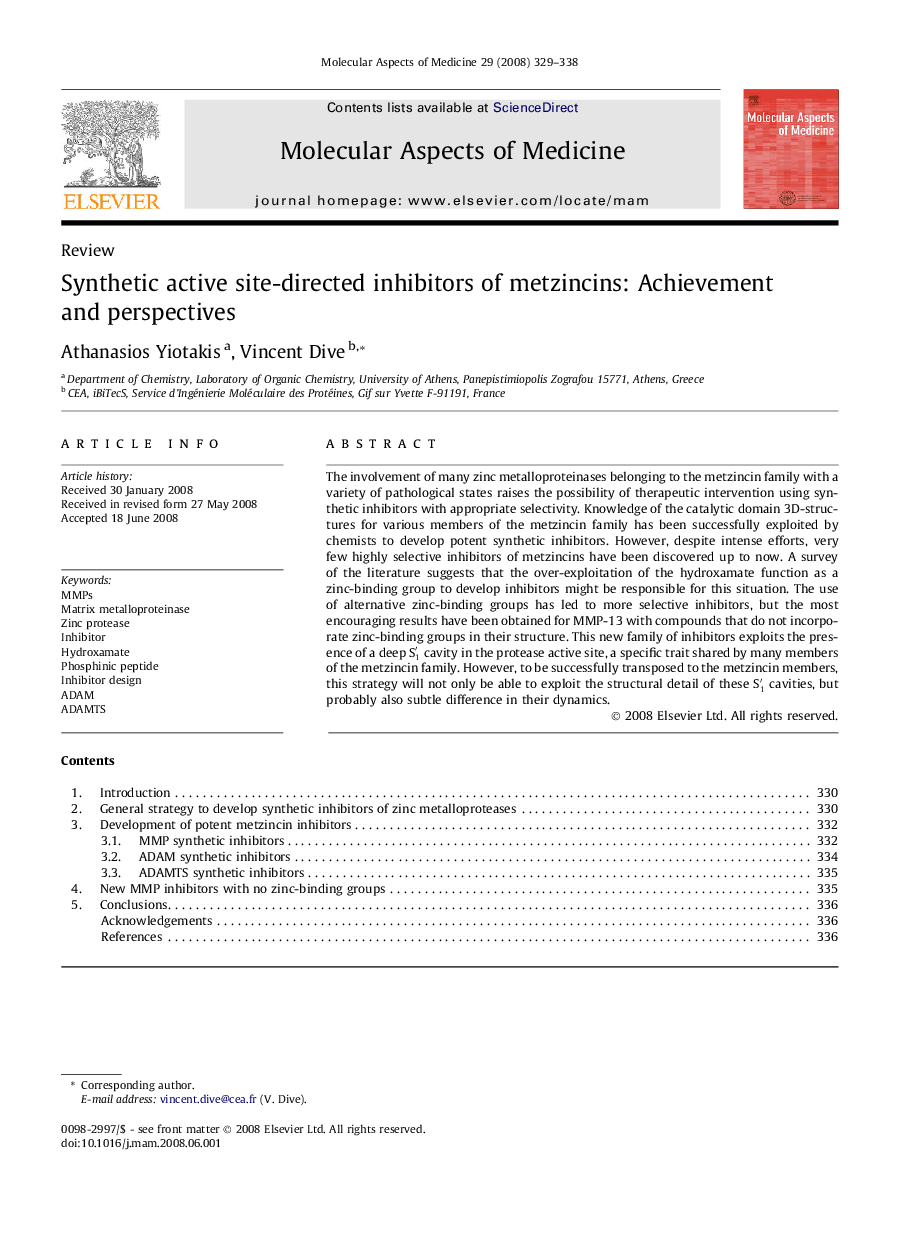| Article ID | Journal | Published Year | Pages | File Type |
|---|---|---|---|---|
| 1995767 | Molecular Aspects of Medicine | 2008 | 10 Pages |
The involvement of many zinc metalloproteinases belonging to the metzincin family with a variety of pathological states raises the possibility of therapeutic intervention using synthetic inhibitors with appropriate selectivity. Knowledge of the catalytic domain 3D-structures for various members of the metzincin family has been successfully exploited by chemists to develop potent synthetic inhibitors. However, despite intense efforts, very few highly selective inhibitors of metzincins have been discovered up to now. A survey of the literature suggests that the over-exploitation of the hydroxamate function as a zinc-binding group to develop inhibitors might be responsible for this situation. The use of alternative zinc-binding groups has led to more selective inhibitors, but the most encouraging results have been obtained for MMP-13 with compounds that do not incorporate zinc-binding groups in their structure. This new family of inhibitors exploits the presence of a deep S1′ cavity in the protease active site, a specific trait shared by many members of the metzincin family. However, to be successfully transposed to the metzincin members, this strategy will not only be able to exploit the structural detail of these S1′ cavities, but probably also subtle difference in their dynamics.
